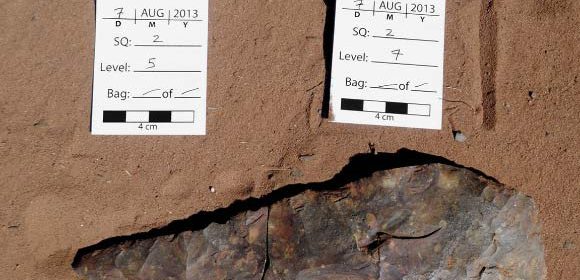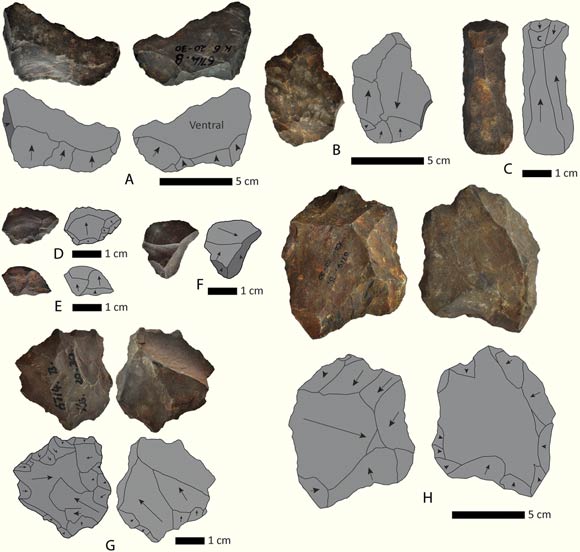1-Million-Year-Old Artifacts Found in South Africa

1-Million-Year-Old Artifacts Found in South Africa
In the town of Kathu in South Africa’s North Cape province, South African and Canadian archaeologists discovered tens of thousands of Earlier Stone Age artifacts, including hand axes and other tools believed to be up to a million years old.

The scientists from the University of Cape Town (UCT) and the University of Toronto published their first detailed information in the journal PLOS ONE on the Kathu Townlands site, one of South Africa’s richest early prehistoric archaeological sites.
One component of a group of prehistoric sites known as the Kathu Complex is the Kathu Townlands site, estimated to be about 700 000 and a million years old.
Other sites in the complex include Kathu Pan 1, which has produced fossils of animals such as elephants and hippos, as well as the earliest known evidence of tools used as spears from a level dated to half-a-million years ago.
According to the study, the latest research results confirm the “remarkably high artefact density” of an extraordinarily rich archaeological deposit whose full extent has yet to be determined.
Such is its richness, workmen in the area have reportedly used gravel “composed primarily of artefacts” in order to repair roads.
“We need to imagine a landscape around Kathu that supported large populations of human ancestors, as well as large animals like hippos,” Professor Michael Chazan, director of the Archaeology Centre at the University of Toronto and one the co-authors of the study, said in a statement issued by the two universities on Friday.
“All indications suggest that Kathu was much wetter, maybe more like the Okavango than the Kalahari. There is no question that the Kathu Complex presents unique opportunities to investigate the evolution of human ancestors in southern Africa.”

But the scientific challenges posed by the density of early human traces in the area are outweighed by the more immediate challenges posed by development in what is, today, a major iron mining centre.
“The site is amazing and it is threatened,” the lead author of the journal paper, Steven James Walker from the Department of Archaeology at UCT, said on Friday.
“We’ve been working well with developers as well as the South African Heritage Resources Agency to preserve it, but the town of Kathu is rapidly expanding around the site. It might get cut off on all sides by development, and this would be regrettable.”
The South African Heritage Resources Agency designated the Kathu Townlands site as a Grade 1 National Heritage site in 2013, but according to the researchers the threat to deposits beyond the declared area remain acute.
For Walker, the fact that such an extensive prehistoric site is located in the middle of a zone of intensive development poses a unique challenge for archaeologists and developers to find strategies to work cooperatively.